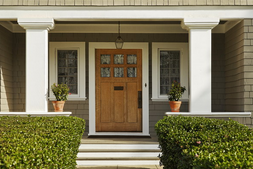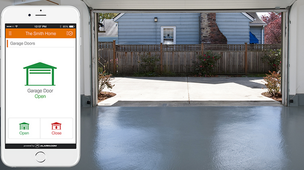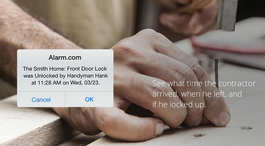
In the world of home security, we promote a similar strategy of understanding the common entry points that burglars use and securing them accordingly. Unfortunately, many burglary victims do not know what these entry points are until it is too late.
Keep in mind that there is no way to prevent a truly determined burglar from breaking into your home. There are things you can do that might cause a burglar to change their mind about entering your home, either because it’s too much work or it takes too long.
The most common entry points for burglars are:
- First-floor front door (34%)
- First-floor back door (22%)
- Large first-floor window (23%)
- Garage (9%)
If a burglar is unable to gain quick entry through one of these four entry points, they may resort to a basement window or a second-floor window accessible by way of a tree or nearby structure. The average homeowner can significantly reduce the risk of burglary by concentrating on securing all first-floor windows and doors.
Securing Entry PointsIt may seem odd that burglars would try to enter your front door in plain view of anyone on the street. But this tells you exactly why it’s important to protect yourself: The front door is chosen because it is usually the easiest and fastest way in.
Burglars are criminals of opportunity. They want to get in quickly, find a few valuables, and get out without being noticed. An unprotected front door is a perfect entry point for quick entry and exit. By the way, a skilled burglar can be in and out of a home in less than seven minutes.
Your best defense is a double-keyed deadbolt lock. Deadbolt locks are difficult to force open without making a lot of noise. A double-keyed lock is even better because it prevents a burglar from breaking a window and reaching in to unlock it by hand.
As for your windows, do not trust the latches installed at the factory. Instead, buy window locks at your local hardware or security store. These are very affordable and surprisingly effective.
Your back door should also be locked by a double-keyed deadbolt, and your garage should be secured by an electric door opener. With all of these entry points secured, you can move on to installing block windows in the basement if the added peace of mind makes you more comfortable.
Tying It All Together:
Deadbolts, window locks and block windows will slow down a burglar significantly. You can tie it all together – and continue to increase the chances that burglars will not hit your home – by installing a monitored home security system. Monitored home security ensures someone is always keeping an eye on your property. It also acts as an excellent deterrent because burglars know their activities are being monitored.
A basic system from One-Stop Communications covers your first-floor doors and windows using sensors that communicate wirelessly with a central control panel. Even this minimal amount of basic protection is very effective in preventing home burglary. For even greater protection, you can add remote surveillance cameras and motion detectors. It all adds up to effectively keeping burglars away.
Sources:
- A Secure Life – http://www.asecurelife.com/security-infographic/




